Introduction to Neural Networks with PyTorch
NCAS Summer School 2025
ICCS/Cambridge
ICCS/Cambridge
Rough Schedule
- 9:00-10:30 - Neural Networks and Climate Application lecture
- 11-12:30 - Teaching/Code-along
Material
These slides can be viewed at:
The html and source can be found on GitHub. Follow this link:
Based on the workshop developed by Jack Atkinson and Jim Denholm:
V1.0 released and JOSE paper accepted:
Learning objectives
The key learning objective from this workshop could be simply summarised as: Provide the ability to develop ML models in PyTorch.
Specifically:
- provide an understanding of the structure of a PyTorch model and ML pipeline,
- introduce the different functionalities PyTorch might provide,
- encourage good research software engineering (RSE) practice, and
- exercise careful consideration and understanding of data used for training ML models.
With regards to specific ML content, we cover:
- using ML for both classification and regression,
- artificial neural networks (ANNs) and convolutional neural networks (CNNs)
- treatment of tabular data and image data
Part 1: Neural-network basics – and fun applications.
Stochastic gradient descent (SGD)
- Generally speaking, most neural networks are fit/trained using SGD (or some variant of it).
- To understand how one might fit a function with SGD, let’s start with a straight line: \[y=mx+c\]
Fitting a straight line with SGD I
- Question—when we a differentiate a function, what do we get?
- Consider:
\[y = mx + c\]
\[\frac{dy}{dx} = m\]
- \(m\) is certainly \(y\)’s slope, but is there a (perhaps) more fundamental way to view a derivative?
Fitting a straight line with SGD II
- Answer—a function’s derivative gives a vector which points in the direction of steepest ascent.
- Consider
\[y = x\]
\[\frac{dy}{dx} = 1\]
- What is the direction of steepest descent?
\[-\frac{dy}{dx}\]
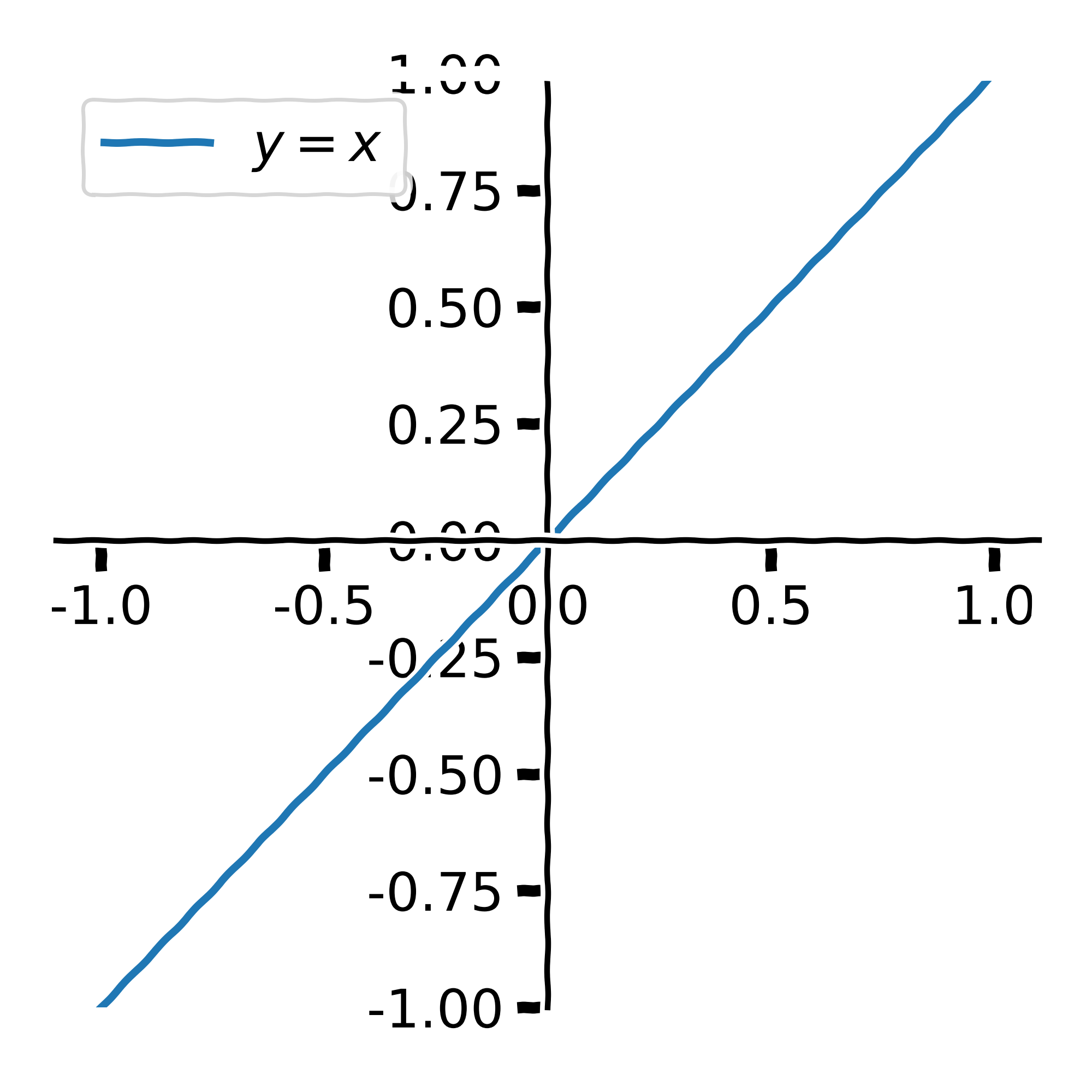
Fitting a straight line with SGD III
- When fitting a function, we are essentially creating a model, \(f\), which describes some data, \(y\).
- We therefore need a way of measuring how well a model’s predictions match our observations.
Fitting a straight line with SGD IV
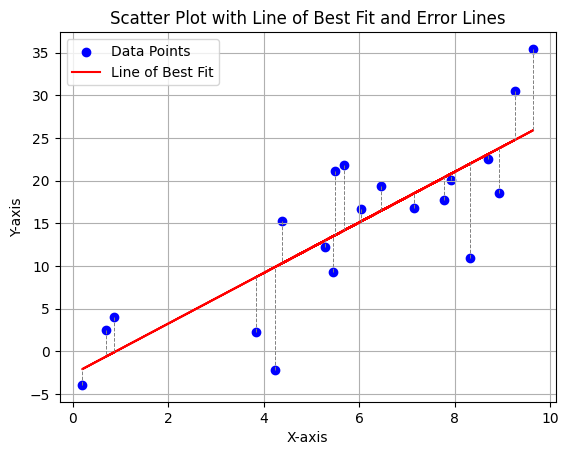
- We can measure the distance between \(f(x_{i})\) and \(y_{i}\).
Fitting a straight line with SGD V
- Normally we might consider the mean-squared error:
\[L_{\text{MSE}} = \frac{1}{n}\sum_{i=1}^{n}\left(y_{i} - f(x_{i})\right)^{2}\]
Model: \(f(x) = mx + c\)
Data: \(\{x_{i}, y_{i}\}\)
Loss: \(\frac{1}{n}\sum_{i=1}^{n}(y_{i} - x_{i})^{2}\)
- We can differentiate the loss function w.r.t. to each parameter in the the model \(f\). \[ \begin{align} L_{\text{MSE}} &= \frac{1}{n}\sum_{i=1}^{n}(y_{i} - f(x_{i}))^{2}\\ &= \frac{1}{n}\sum_{i=1}^{n}(y_{i} - mx_{i} + c)^{2} \end{align} \]
Fitting a straight line with SGD VI
- Differential:
\[ \frac{\partial L}{\partial m} \;=\; \frac{1}{n}\sum_{i=1}^{n} 2\bigl(m\,x_{i}+c-y_{i}\bigr)\,x_{i}. \]
\[ \frac{\partial L}{\partial c} \;=\; \frac{1}{n}\sum_{i=1}^{n} 2\bigl(m\,x_{i}+c-y_{i}\bigr). \]
- This gradient is used to find the parameters that minimise the loss, thereby reducing overall error.
Update Rule
- We can iteratively minimise the loss by stepping the model’s parameters in the direction of steepest descent:
\[m_{n + 1} = m_{n} - \frac{dL}{dm} \cdot l_{r}\]
\[c_{n + 1} = c_{n} - \frac{dL}{dc} \cdot l_{r}\]
- where \(l_{\text{r}}\) is a small constant known as the learning rate.
Quick recap
To fit a model we need:
- Some1 data.
- A model.
- A loss function
- An optimisation procedure (often SGD and other flavours of SGD).
What about neural networks?
- Neural networks are just functions.
- We can “train”, or “fit”, them as we would any other function:
- by iteratively nudging parameters to minimise a loss.
- With neural networks, differentiating the loss function is a bit more complicated
- but ultimately it’s just the chain rule.
- We won’t go through any more maths on the matter—learning resources on the topic are in no short supply.1
Fully-connected neural networks
- The simplest neural networks commonly used are generally called fully-connected neural nets, dense networks, multi-layer perceptrons, or artifical neural networks (ANNs).
- We map between the features at consecutive layers through matrix multiplication and the application of some non-linear activation function.
\[a_{l+1} = \sigma \left( W_{l}a_{l} + b_{l} \right)\]
- For common choices of activation function, see the PyTorch docs.
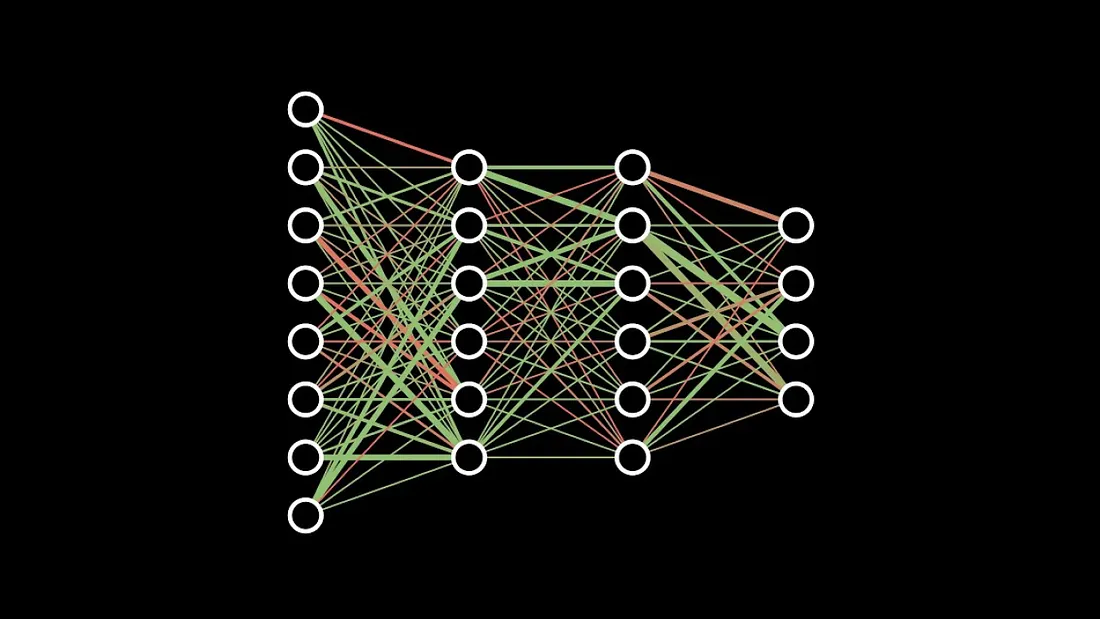
Image source: 3Blue1Brown
Uses: Classification and Regression
- Fully-connected neural networks are often applied to tabular data.
- i.e. where it makes sense to express the data in a table-like object (such as a
pandasdata frame). - The input features and targets are represented as vectors.
- i.e. where it makes sense to express the data in a table-like object (such as a
- Neural networks are normally used for one of two things:
- Classification: assigning a semantic label to something – i.e. is this a dog or cat?
- Regression: Estimating a continuous quantity – e.g. mass or volume – based on other information.
Python and PyTorch
- In this workshop, we will implement some straightforward neural networks in PyTorch, and use them for different classification and regression problems.
- PyTorch is a deep learning framework that can be used in both Python and C++.
- There are other frameworks like Jax, Tensorflow, PyTorch Lightning
- See the PyTorch website: https://pytorch.org/
Datasets, DataLoaders & nn.Module
What a Dataset class does
- Provides a uniform API to your data
- Handles
- Loading raw files (images, CSVs, audio …)
- Train / validation / test split logic
- Transforms / augmentation per item
- Item retrieval so the rest of PyTorch can stay agnostic
Anatomy of a custom Dataset
class MyDataset(torch.utils.data.Dataset):
def __init__(self, root_dir, split="train", transform=None):
# 1️ load or download files / labels
self.paths, self.labels = load_index_file(root_dir, split)
self.transform = transform # 2️ save transformsThe constructor is where you gather file paths, download archives, read CSVs, etc.
__len__ & __getitem__
def __len__(self):
return len(self.paths) # total #samples
def __getitem__(self, idx):
img = PIL.Image.open(self.paths[idx]).convert("RGB")
if self.transform: # 3️ apply transforms
img = self.transform(img)
label = self.labels[idx]
return img, label # 4️ single exampleWith these two methods PyTorch knows how big the dataset is and how to fetch one record.
Using the custom dataset
The DataLoader at a glance
- Wraps any
Datasetin an iterable - Batches samples together
- Shuffles if asked
- Uses multiprocessing (
num_workers) to pre‑fetch data in parallel - Returns
(batch, labels)tuples ready for the GPU
Typical DataLoader code
Quick networks with nn.Sequential
mlp = torch.nn.Sequential(
torch.nn.Linear(784, 256), torch.nn.ReLU(),
torch.nn.Linear(256, 64), torch.nn.ReLU(),
torch.nn.Linear(64, 10)
)
out = mlp(torch.rand(32, 784)) # 32‑sample batchGreat for simple feed‑forward stacks when no branching logic is needed.
nn.Module overview
- The base class for all neural‑network parts in PyTorch
- You sub‑class, then implement
__init__(self): declare layersforward(self, x): define the forward pass
Declaring layers in __init__
class MyCNN(torch.nn.Module):
def __init__(self, num_classes=2):
super().__init__()
self.features = torch.nn.Sequential(
torch.nn.Conv2d(3, 32, 3, padding=1), torch.nn.ReLU(),
torch.nn.MaxPool2d(2),
torch.nn.Conv2d(32, 64, 3, padding=1), torch.nn.ReLU(),
torch.nn.MaxPool2d(2)
)
self.classifier = torch.nn.Linear(64*56*56, num_classes)The forward pass
def forward(self, x):
x = self.features(x) # conv stack
x = x.flatten(1) # N,…
x = self.classifier(x) # logits
return xOnly forward is needed – back‑prop is handled automatically.
Calling the model ≈ calling forward
model = MyCNN()
logits1 = model(images) # preferred ✔
logits2 = model.forward(images) # works, but avoidmodel(input) internally routes to model.forward(input) via __call__.
Key Take‑Aways
- Dataset = organized access to individual samples
- DataLoader = batching, shuffling, parallel I/O
nn.Module= reusable building block; override__init__&forwardmodel(x)is the idiomatic way to run a forward pass- Use
nn.Sequentialfor quick layer chains
Exercises
Penguins!

Image source: Palmer Penguins by Alison Horst
Exercise 1 – classification
- In this exercise, you will train a fully-connected neural network to classify the species of penguins based on certain physical features.
- https://github.com/allisonhorst/palmerpenguins
Exercise 2 – regression
- In this exercise, you will train a fully-connected neural network to predict the mass of penguins based on other physical features.
- https://github.com/allisonhorst/palmerpenguins
Part 2: Fun with CNNs
Convolutional neural networks (CNNs): why?
Advantages over simple ANNs:
- They require far fewer parameters per layer.
- The forward pass of a conv layer involves running a filter of fixed size over the inputs.
- The number of parameters per layer does not depend on the input size.
- They are a much more natural choice of function for image-like data:
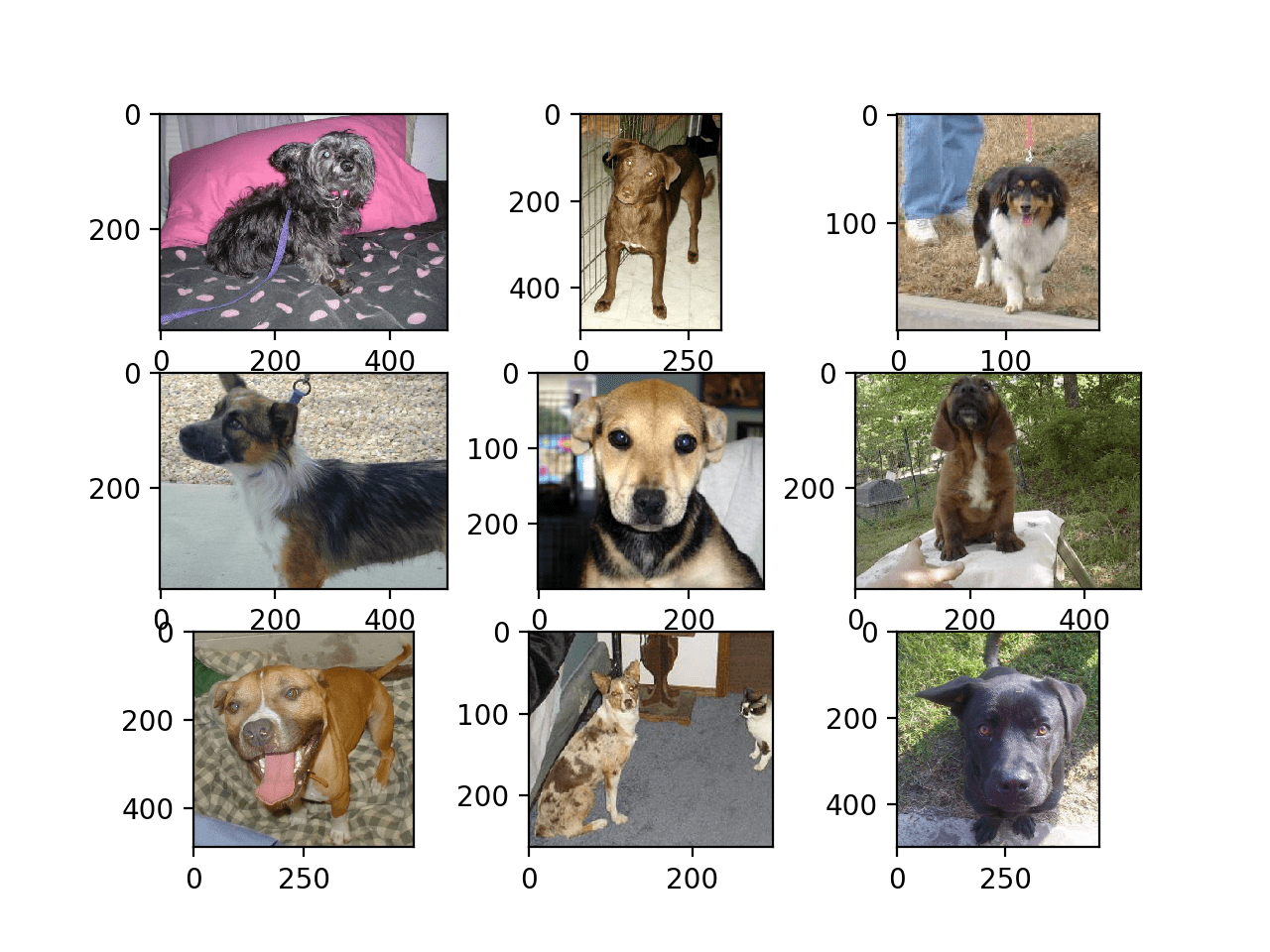
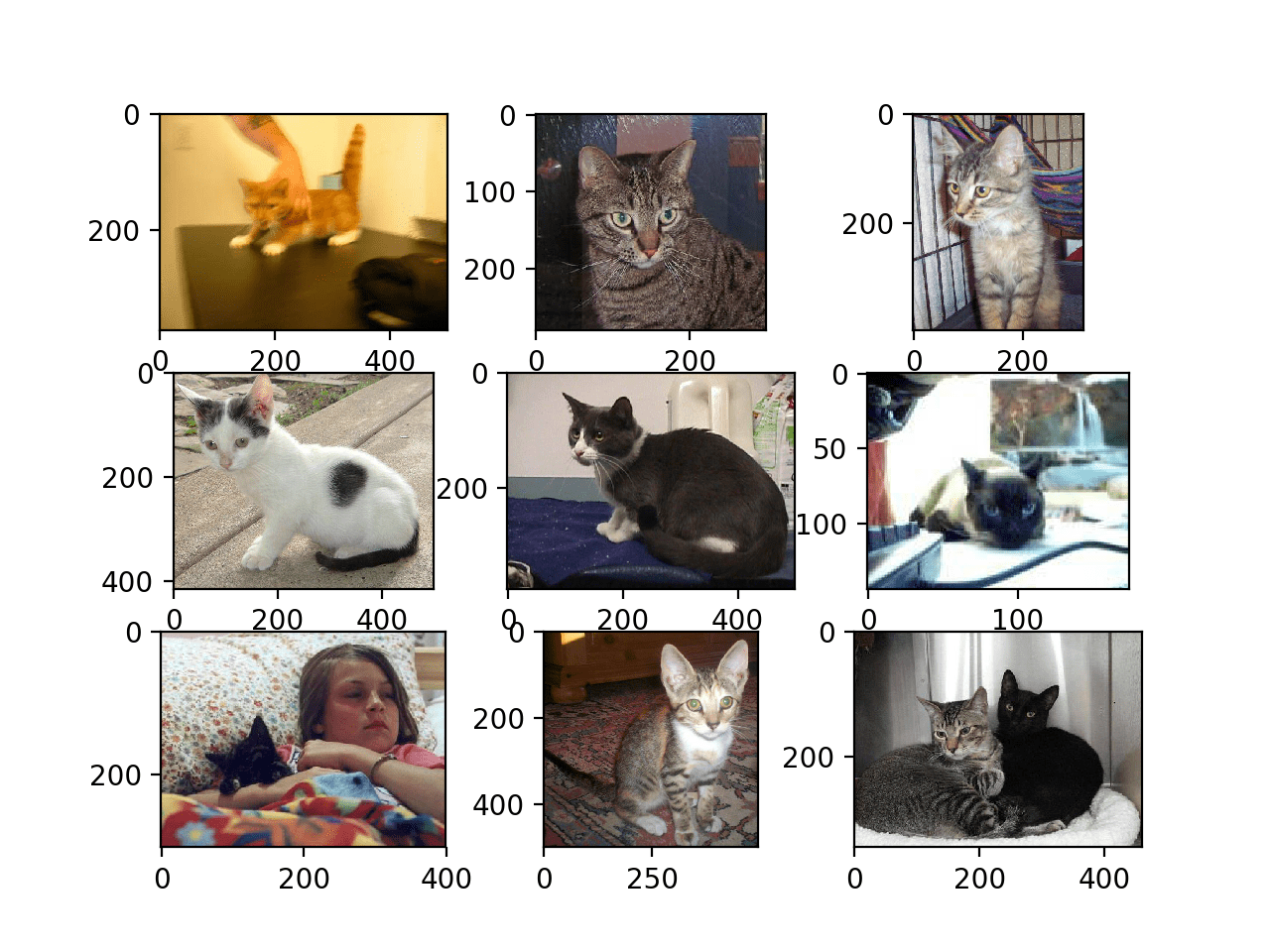
Image source: Machine Learning Mastery
Convolutional neural networks (CNNs): why?
Some other points:
- Convolutional layers are translationally invariant:
- i.e. they don’t care where the “dog” is in the image.
- Convolutional layers are not rotationally invariant.
- e.g. a model trained to detect correctly-oriented human faces will likely fail on upside-down images
- We can address this with data augmentation (explored in exercises).
What is a (1D) convolutional layer?
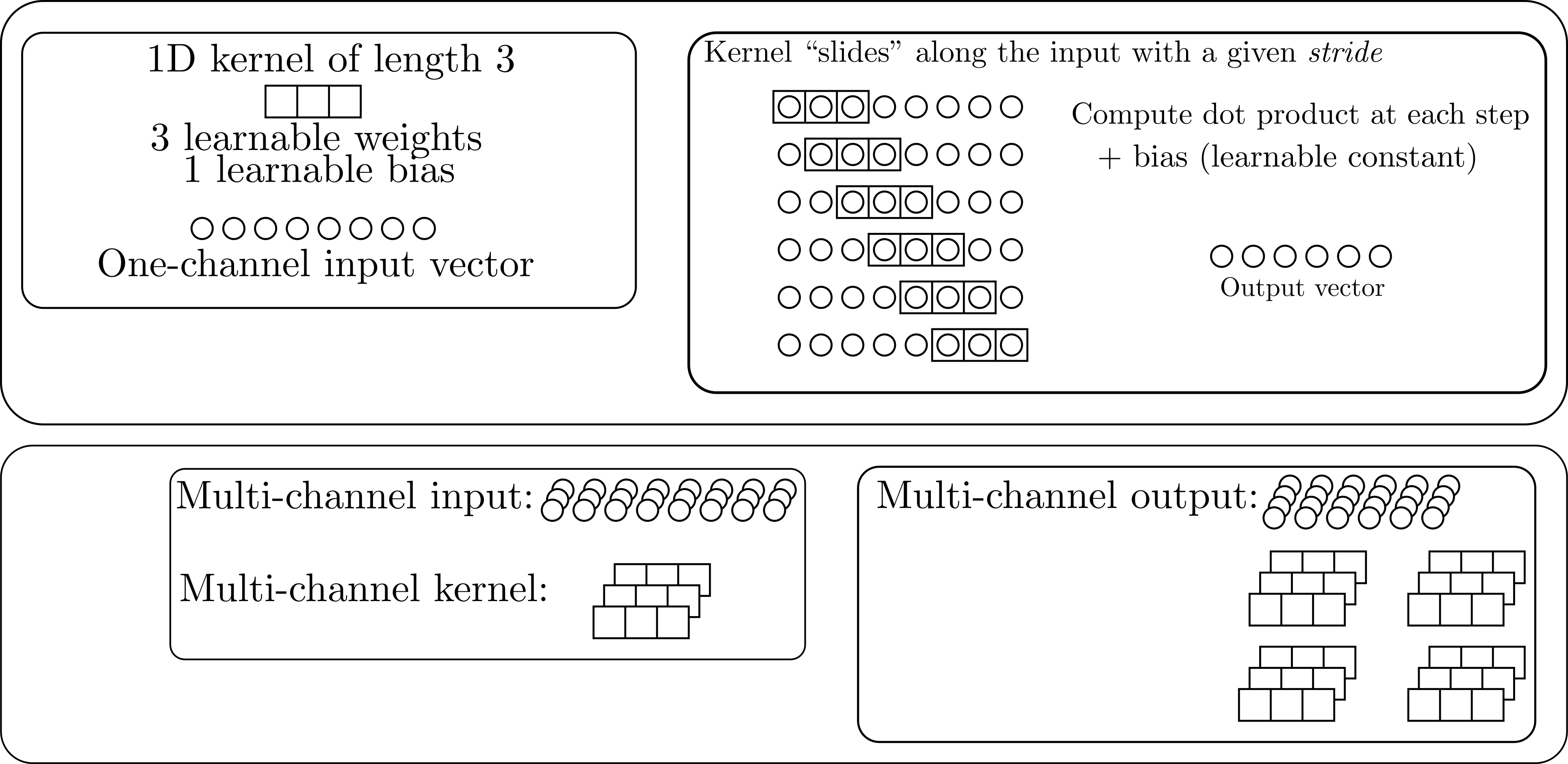
See the torch.nn.Conv1d docs
2D convolutional layer
- Same idea as in on dimension, but in two (funnily enough).
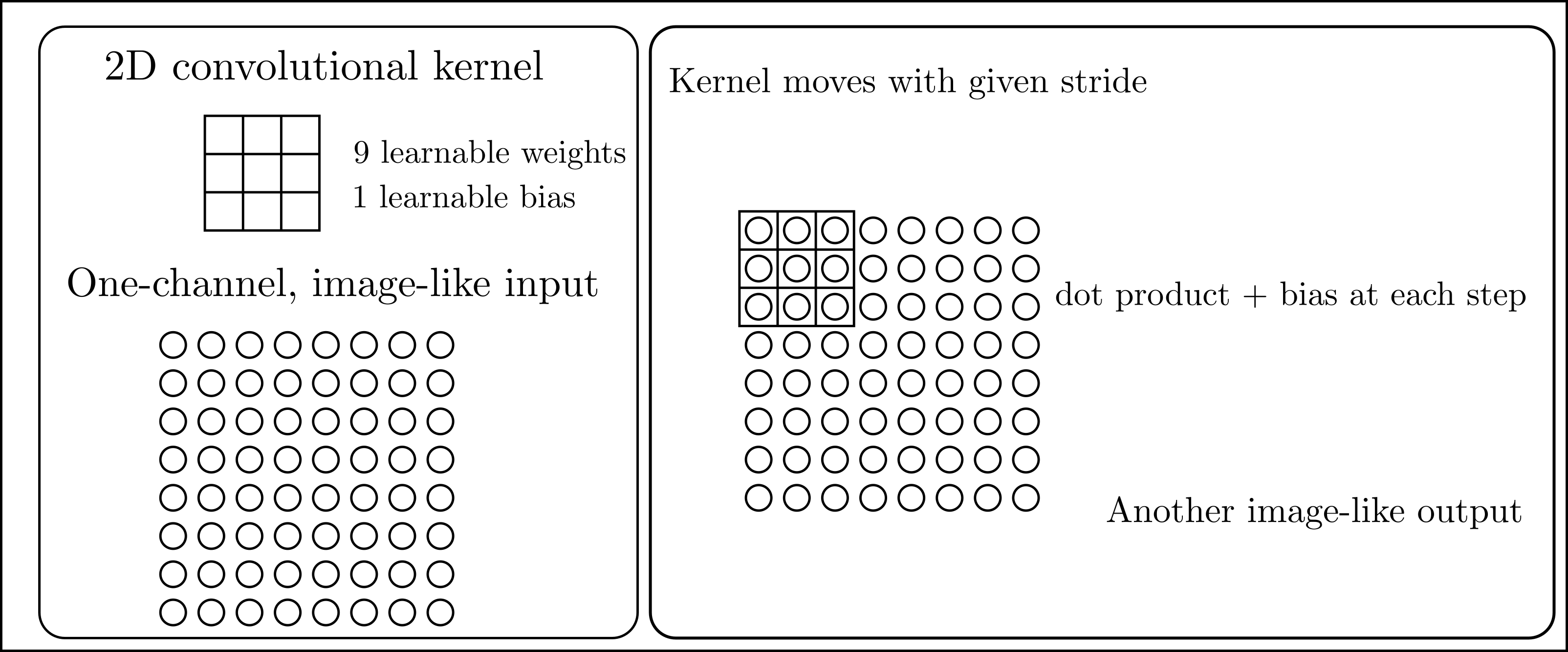
- Everthing else proceeds in the same way as with the 1D case.
- See the
torch.nn.Conv2ddocs. - As with Linear layers, Conv2d layers also have non-linear activations applied to them.
Typical CNN overview

- Series of conv layers extract features from the inputs.
- Often called an encoder.
- Adaptive pooling layer:
- Image-like objects \(\to\) vectors.
- Standardises size.
torch.nn.AdaptiveAvgPool2dtorch.nn.AdaptiveMaxPool2d
- Classification (or regression) head.
- For common CNN architectures see
torchvision.modelsdocs.
Exercises
Exercise 1 – classification
MNIST hand-written digits.

- In this exercise we’ll train a CNN to classify hand-written digits in the MNIST dataset.
- See the MNIST database wiki for more details.
Image source: npmjs.com
Exercise 2—regression
Random ellipse problem
In this exercise, we’ll train a CNN to estimate the centre \((x_{\text{c}}, y_{\text{c}})\) and the \(x\) and \(y\) radii of an ellipse defined by \[ \frac{(x - x_{\text{c}})^{2}}{r_{x}^{2}} + \frac{(y - y_{\text{c}})^{2}}{r_{y}^{2}} = 1 \]
The ellipse, and its background, will have random colours chosen uniformly on \(\left[0,\ 255\right]^{3}\).
In short, the model must learn to estimate \(x_{\text{c}}\), \(y_{\text{c}}\), \(r_{x}\) and \(r_{y}\).
Contact
For more information we can be reached at:
Jack Atkinson
